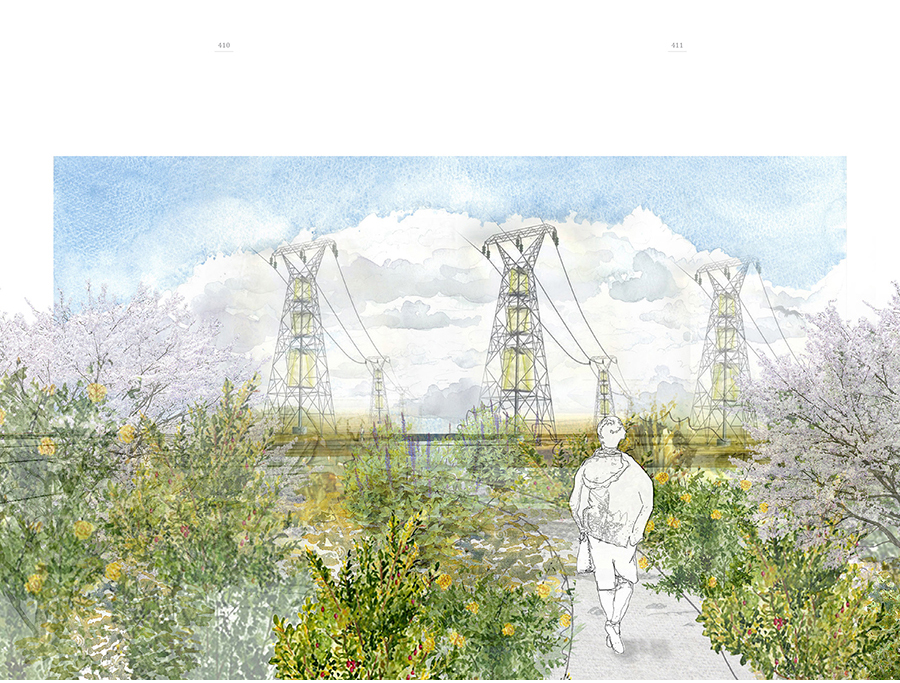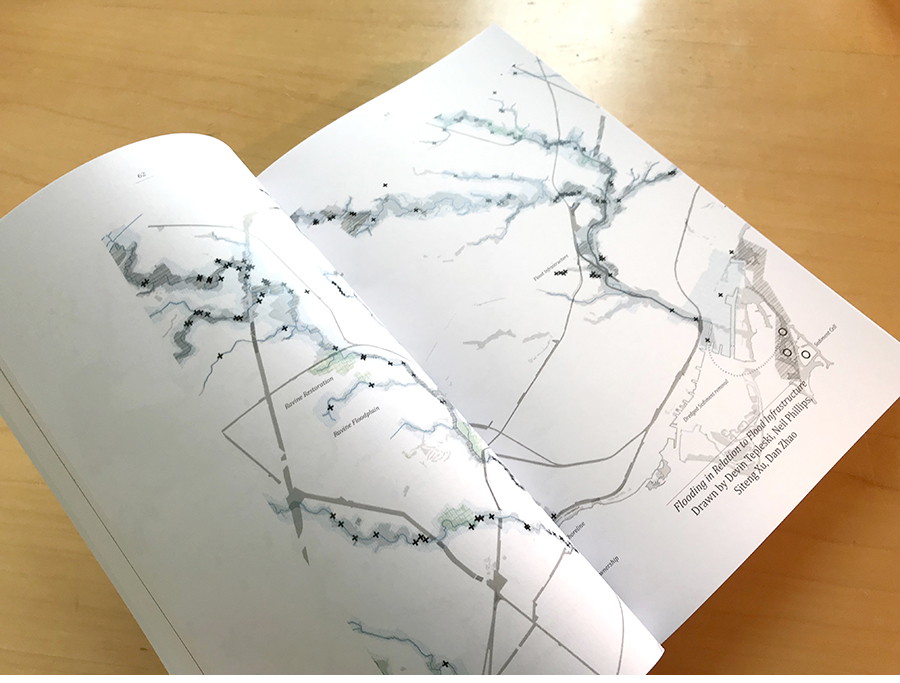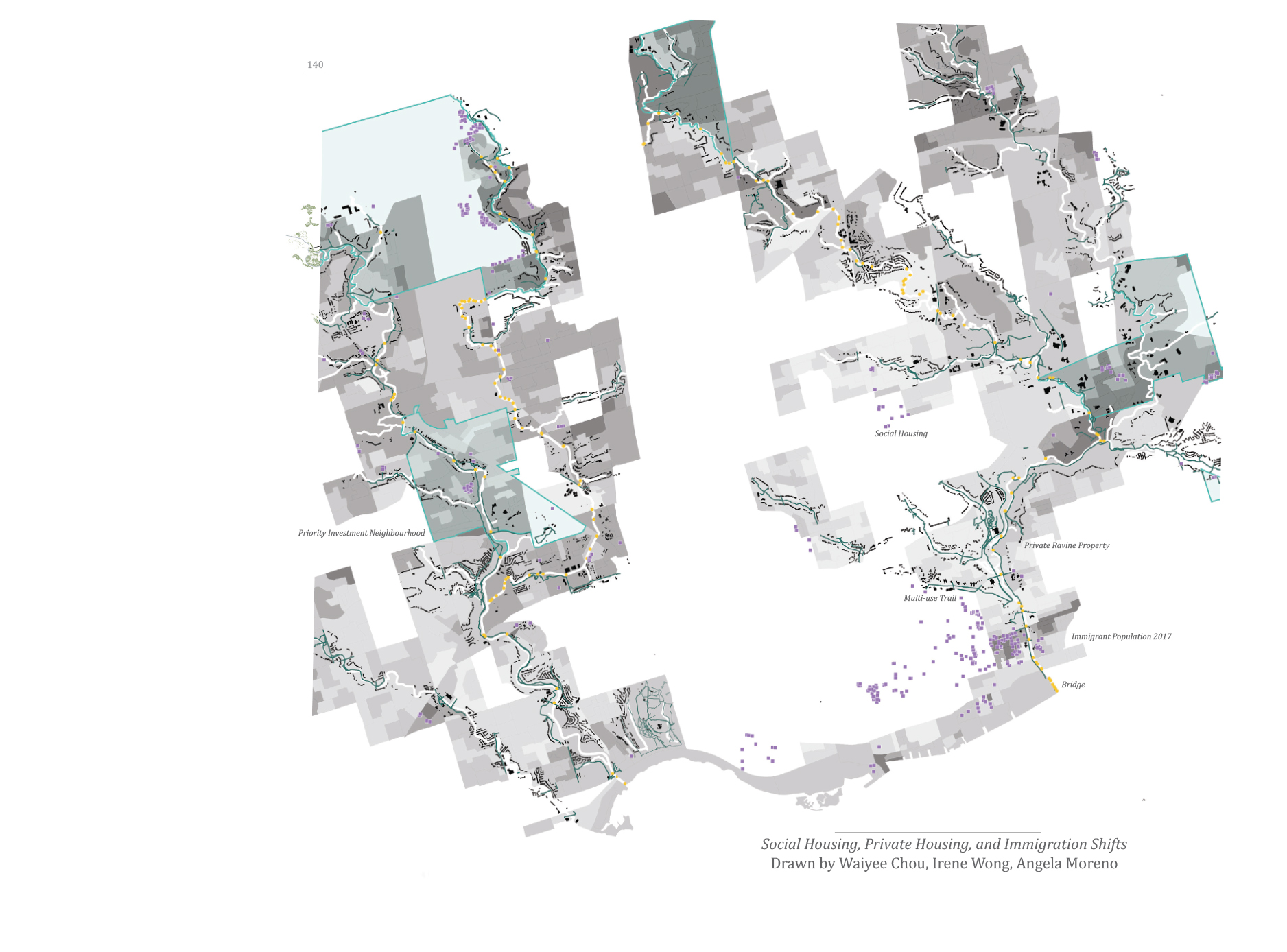31.01.19 - “Ravine Re-create” collects innovative new visions for Toronto’s urban waterways
Historically, Toronto has had a complicated relationship with our local ravines and waterways. While most Torontonians pass the Humber River or the Don Valley at some point during our daily commute, as urbanites we don’t often consider our relationship with these green spaces and how we might best leverage them to improve the livability or infrastructure of our city.
A new book, birthed in the creative ferment of the Daniels Faculty’s studio environment, seeks to address this lack of consideration by reimagining our two main local ravines as more useable public space, as enhancements to our infrastructure, and as environmental assets to the predominantly urban local landscape.
Ravine Re-create highlights work from Daniels Faculty students in the 2016 Option Studio, established by Associate Professor of Landscape Architecture Alissa North, as well as designs from the similarly-structured 2018 MLA Design Studio 4, coordinated by North and co-taught with Assistant Professor of Landscape Architecture Justine Holzman, and Sessional Lecturer Emilia Hurd.
Working in collaboration with several divisions of the City of Toronto and the Toronto and Region Conservation Authority, Waterfront Toronto, and Evergreen, students developed designs and ideas for reimagined landscapes that sought to address specific action items and priorities identified by the Toronto Ravine Strategy, the City’s recently developed policy guide for future development and use of our urban waterways. In addition to this close collaboration and consultation with local agencies, students also undertook a guided tour of the Humber River, led by Alan Colley, founder of Toronto Aboriginal Eco Tours.
The studio framework consisted of two main stages. Students first worked on mapping these areas in order to better understand the larger ravine systems, and then proceeded to proposing specific design ideas for particular sites along the ravine or river. This work has now been compiled into a book recently published by North entitled Ravine Re-create: Design Ideas for Toronto’s Ravines, featuring designs and drawings from students.
“The hope is that this book will allow Torontonians to gain new perspectives and see new potentials for the ravines,” explains North. “And that the interesting maps and design proposals in the book will spur their own ideas. The ravine system is a very big network, and it will need many heads to guide it toward balanced integrity.”
North says that this kind of thinking is timely, given the rapid urban growth experienced by the GTA in recent decades. “Our ravines are such a great asset for our exponentially increasing city, but we have modified them to such a great extent, and mostly detrimentally,” she elaborates. “Due to their urban context, they cannot be returned to any type of pre-settlement state, so their health is in our hands. How and what we decide to do has potential beneficial impact environmentally, socially, equitably, economically, and ecologically, but only if we commit to the ravines. I think Toronto now values its ravines, but doesn’t really know what that means, or what to do with that notion. This book provides, ideals, ideas, and visions.”
Ravine Re-create: Design Ideas for Toronto’s Ravines retails for $47.50 (including tax) and can be purchased by emailing Associate Professor Alissa North.
Images by:
1. Stephen Brophy
2. Adelin Yingqian Hu
4. Andrew Hooke
5. Waiyee Chou, Irene Wong, Angela Moreno
6. Yuxin Liu, Kathleen Alexander, Cynthia Chiu Chen, Andrea Lam







